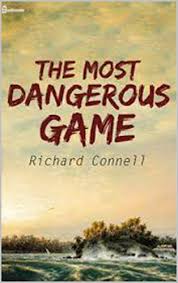
The effects of OTT players on the mobile operators
Order Instructions:
Dear all,
Reference to the on going project we are working on:
Please refer to the order number:
113162 for the project proposal
113311 for the literature review
Now i want you Please to start working on the introduction or the chapter one, please make sure to use the same references you used in the proposal and the literature review, as soon as this part will be ready we will start the last chapter for the methodology and the data collection.
– Please find below the instructions for this chapter:
1- we need to show couple of diagrams in the introduction.
2- Introduction should cover the literature review.
3- the research questions will as follows:
a) What are the OTT players/ providers.
b) How they are affecting the mobile operators?
c) what are the strategies applies by the Mobile operators?
4- what is my hypothesis?
5- the methodology used will be qualitative through interviews top management in couple of the mobile operators, quantitative survey for the consumer on using the OTT rather than the service from the operators.
PLEASE CONTACT ME FOR ANY CLARIFICATION AND HELP ME TO PASS THIS SO THAT WE CAN START THE THIRD PART.
SAMPLE ANSWER
Abstract
OTT players have been considered a potential threat to the telecom companies. Mehrotra & Kumar (2014, p.169) argue that the OTT players have the tendency to provide services across all IP networks. The mobile operators find that it is hard to compete with the actors because they provide services that are value added. With the development of technology such as adoption of tablet computers and smartphones, the players have become more advanced than their counterparts’ telecom mobile operators. The OTT players include Internet-based alternatives such as WhatsApp and Skype (Tsai, Lee & Yu 2009, P.210). The OTT players also include third-party content and social networking firms such as Facebook and YouTube. Their effects are alarming as there is a considerable fall in revenues on the side of the mobile operators (shown in diagram 1). Usually, their (OTT players) operations are not under the administrative control of the content of the service giver. The players have drastically affected conventional telecom services, particularly SMS and voice. OTT messaging is projected by Adejuwon (2013, p.51) to surpass SMS in 2012 (shown in diagram 2). The effects have caused the mobile operators to work ineffectively. For instance, the players have started to use data to supplement loss.
Park, Jung & Noh (2014) and Sheehan (2010) argue that the mobile operators are in a ferocious cycle of confusion. The mobile operators are viciously engaging in investing much of their considerable money and time searching how to provide similar web services models for the altered telecom customers. Noticeably, the business models used by mobile operators and OTT players are quite different. Observably, the OTT players generate their income from advertising and the sale of the content or services they provide. Martinaitis & Rogoža (2015) argue that the revues from advertising are satisfactory to the players since they tend to have a larger churning subscriber base. This is apparent because the customers can switch between products whenever they want. Therefore, the client has a direct correlation with the OTT players and is free to contact subscriptions from any place, at any given time, and using any available technology.
Research background
The literature review gives that the mobile operators have been devising the mechanism to decrease the competition from the players. The mobile operators have been focusing on leveraging their primary business of selling data, thereby projecting to increase their walled market share (Kreutzer & Land 2014). The mechanism used in leveraging is by decreasing the content and service to those subscribers who use their products (Smith 2014). In addition, the leveraging takes the shape of offering the best quality of service to its customers. This method is mostly defensive.
One of the strategies to be improved to lessen the deep scars of OTT players on the mobile operators is by developing new ecosystems. Nelder (2011, p.204) and Stage & Wells (2013, p.6) argue that the mobile operators can facilitate new ecosystems and advances. This is possible because the operators can use the network infrastructure to expose APIs (application programming interfaces) correlated to their pieces of equipment (Keefe 2009). The net effects will be that the mobile operators will create innovative services that could connect into multifaceted infrastructure. In addition, the operators will be able to provide value-added services to communications (Leah 2014). Commendably, the operators will also be able to give application-based communication services.
The next strategy is to ensure that their (mobile operators) products are of high quality and have service reliability (Star 2014, p.239). Relating that the operators enjoy the ownership and control of the network, it can be able to ensure that it services meets reliability and quality for its respective subscribers. Observably, the mobile operators own as well as control the billing correlation (Jimenez-Castillo & Sanchez-Perez 2013, p.19). Therefore, it can use this opportunity to charge subscribers for the use of OTT services. This process can be affected through the monthly subscription or based on the per-event basis (JHO 2013). Furthermore, the operators can take advantage of the market by comprising free access to these OTT players as a component of a serving price plan, which will comprehensively include SMS, data, and voice minutes. Deregulation of markets can be enhanced to make sure mobile operators operate efficiently (Harris 2009, p.208). Apparently, the performance of mobile operators is retarded by rigid regulations in most countries. Therefore, they are unable to flex their innovations to compete with the OTT players. In addition, going digital can be enhanced to make sure that they use the most sophisticated methods to compete in the digital market (Adejuwon 2013, p.56). Going digital imply the adoption of technological advancements that can have equal or more production to those of OTT players.
Diagram 1: how share traffic volume is shared in LTE networks (Gates, Milgrom & Robert 2009, p.427)
Diagram 2: The percentage usage of the application mobile data traffic by a device type in 2012 (Dowling, Boulton & Elliott 2010, p.208)
Research aim statement
The purpose of this research is to examine how the mobile operators in the telecom industry can address the effects of OTT players.
Research Objectives
The following research seeks to achieve the following:
- Determine the effects of OTT players on the mobile operators
- The strategies the mobile operators have been using to counteract effects from OTT players
III. Find out the best solution to handling the effects of OTT players
Significance of the research
The study aims at finding the extent at which the OTT players have affected mobile operators. Research also aims at giving the appropriate solutions on how to handle the effects of the OTT players (Carlson, Vincent, Hardesty & Bearden 2009, p.864). This is because the pieces of the literature failed to provide the best solution to deal with effects of the OTT players. There is a call in the literature review for further research to investigate how the mobile operators can strategize itself to weather the storms of OTT players non-defensively (Car, Pilepić & Šimunić 2014, p.207). This is because the pieces of literature appeared to concentrate much on the defensive strategies to deal with the situation. The defensive strategies include limiting access to the network and other mechanisms (Azzara 2010). The research will aim to find how non-defensive strategies such as collaboration can make the mobile operators rejuvenate their sales.
Delimitation
The research aims at studying two hundred and thirty top management persons in the couple of the mobile operators (Almossawi 2012, p.139).
Research methodology
The methodology used will be qualitative through interviews top management in couple of the mobile operators, quantitative survey for the consumer on using the OTT rather than the service from the operators (Mitchell & Jolley, 2010). The quantitative research will be an impact to give the exact figure the OTT players has affected with the mobile operators Zachariadis, Susan & Michael 2013).
References
Adejuwon, O 2013, ‘Sources of Organizational Legitimacy in the Nigerian telecommunications Industry,’ African Journal of Business & Economic Research, Vol. 8 Issue 2/3, p51-83 retrieved from EBSCOhost Database: Business Source Complete on 07.09-2015.
ALMOSSAWI, M.M., (2012). Customer Satisfaction In The Mobile Telecom Industry In Bahrain: Antecedents And Consequences. International Journal Of Marketing Studies, 4(6), Pp. 139-156, retrieved from EBSCOhost Database: Business Source Complete on 07.09-2015.
Azzara, C. V. (2010). Questionnaire design for business research: Beyond linear thinking–an interactive approach. Mustang, OK: Tate Pub & Enterprises Llc.
Car, T, Pilepić, L, Šimunić, M 2014, ‘MOBILE TECHNOLOGIES AND SUPPLY CHAIN MANAGEMENT – LESSONS FOR THE HOSPITALITY INDUSTRY,’ Tourism & Hospitality Management, Vol. 20 Issue 2, p207-219, retrieved from EBSCOhost Database: Business Source Complete on 07.09-2015.
CARLSON, J, VINCENT, L, HARDESTY, M, BEARDEN, O 2009, ‘Objective and Subjective Knowledge Relationships: A Quantitative Analysis of Consumer Research Findings’, Journal of Consumer Research, Vol. 35 Issue 5, p864-876.
Dowling, M, Boulton, W, & Elliott, S 2010, ‘Strategies for Change in the Service Sector: The Global Telecommunications Industry,’ California Management Review, Vol. 36 Issue 3, p57-88.
Gates, S, Milgrom, P, Robert, J 2009, ‘Deterring Predation in Telecommunications: Are Line-of-business Restraints Needed?’, Managerial & Decision Economics, Vol. 16 Issue 4, p427-438, retrieved from EBSCOhost Database: Business Source Complete on 07.09-2015.
Harris, R 2009, ‘Telecommunications Policy in Japan: Lessons for the U.S., California Management Review, Vol. 31 Issue 3, p113-131, retrieved from EBSCOhost Database: Business Source Complete on 07.09-2015.
JHO, W. (2013). Building Telecom Markets: Evolution Of Governance In The Korean Mobile Telecommunication Market, retrieved from EBSCOhost Database: Business Source Complete on 07.09-2015.
Jimenez-Castillo, D, & Sanchez-Perez, M 2013, ‘Integrated market-related internal communication: development of the construct’, International Journal of Market Research, Vol. 55 Issue 4, p2-19. 18
Http://Dx.Doi.Org/10.1007/978-1-4614-7888-1.
LEAH, M. (2014). The EU Approach To Net Neutrality: Network Operators And Over-The-Top Players, Friends Or Foes. Computer Law & Security Review, 30(5), 508-520, retrieved from EBSCOhost Database: Business Source Complete on 07.09-2015.
KEEFE, H. (2009). Is Digital Technology Reshaping Employment Systems In The U.S. Telecommunications Network Services? Industrial & Labor Relations Review, 63(1), P42-59, retrieved from EBSCOhost Database: Business Source Complete on 07.09-2015.
KREUTZER, R., & LAND, K.-H. (2014). Digital Darwinism: Branding And Business Models In Jeopardy, retrieved from EBSCOhost Database: Business Source Complete on 07.09-2015.
Martinaitis, V, Rogoža, R 2015, ‘Quantitative estimation of improvements in the efficiency of district heating substation control system’, Building Services Engineering Research & Technology, Vol. 36 Issue 4, p455-468, retrieved from EBSCOhost Database: Business Source Complete on 07.09-2015.
MEHROTRA, R. and KUMAR, S., (2014). A Comparative Study Of Customer Relationship Management In Telecom Industry In Rajasthan. Asia Pacific Journal Of Management & Entrepreneurship Research, 3(1), Pp. 169-178, retrieved from EBSCOhost Database: Business Source Complete on 07.09-2015.
Mitchell, M. L., & Jolley, J. M. (2010). Research design explained. Australia: Wadsworth.
Nelder, J 2011, ‘Quantitative In Context’, Journal of Advertising Research, Vol. 51, p204-206, retrieved from EBSCOhost Database: Business Source Complete on 07.09-2015.
Park, K, Jung, K, & Noh, K 2014, ‘Strategic action and customer mobility: Antecedents and consequences of strategic actions in the Korean mobile telecommunication service industry,’ Asia Pacific Journal of Management. Mar2014, Vol. 31 Issue 1, p171-193,retrieved from EBSCOhost Database: Business Source Complete on 07.09-2015.
SHEEHAN, M. (2010). Why Is Ramsey Pricing: The Case Of Telecommunications Regulation. Journal Of Economic Issues (Association For Evolutionary Economics). Vol. 25(1), P21-32, retrieved from EBSCOhost Database: Business Source Complete on 07.09-2015.
Stage, F, Wells, S 2013, ‘Critical Quantitative Inquiry in Context’, New Directions for Institutional Research, Vol. 2013 Issue 158, p1-7, retrieved from EBSCOhost Database: Business Source Complete on 07.09-2015.
Star, M. (2014). Qualitative and mixed methods research in economics: surprising growth, promising future. Journal of economic survey, 28(2), 238-264, retrieved from EBSCOhost Database: Business Source Complete on 07.09-2015.
Smith, T 2014, ‘Testing Theory And Related Factors For Influencing Proficiency In Quantitative Research’, Academy of Educational Leadership Journal, Vol. 18 Issue 4, p117-128, retrieved from EBSCOhost Database: Business Source Complete on 07.09-2015.
TSAI, H., LEE, H., & YU, H. (2009). Developing The Digital Content Industry In Taiwan. Review Of Policy Research, 25(2), P169-188, retrieved from EBSCOhost Database:Business Source Complete on 07.09-2015.
Zachariadis, M., Susan, S., & Michael, B. (2013). Methodological implications of critical realism for mixed-methods research, MIS Quarterly, 37(3), 855-879., retrieved from EBSCOhost Database: Business Source Complete on 07.09-2015.
We can write this or a similar paper for you! Simply fill the order form!












